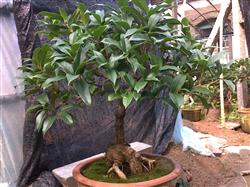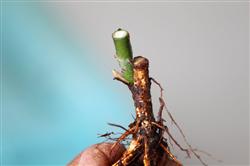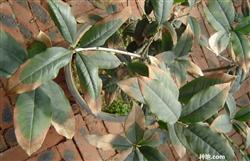How to raise potted osmanthus trees in winter

How to raise potted sweet-scented osmanthus trees in winter? Please give guidance that the absolute temperature in winter is low and lasts for a long time, family potted sweet-scented osmanthus often suffer from frost injury. Based on many years' experience, the author puts forward some views on the maintenance of potted sweet-scented osmanthus in winter in northern China. "Autumn does not enter" that is, it is advisable to enter the room late rather than early. In general, the cooling range at the turn of autumn and winter will not be very large, as long as the temperature is not less than-1 ℃, potted sweet-scented osmanthus will be placed in the open air for 4 to 5 days. After low temperature training, the cold tolerance of sweet-scented osmanthus will be significantly improved. "No freezing in winter" means to protect sweet-scented osmanthus from freezing damage as far as possible. Winter maintenance in northern China can take the following measures: first, put potted sweet-scented osmanthus directly in the greenhouse, room temperature is not higher than 3 ℃, to promote its dormancy. When placed, sweet-scented osmanthus should be exposed to the sun to the maximum extent. If it cannot be directed, it should also be placed in a place with strong light so that it can accept scattered light. In addition, sweet-scented osmanthus should be put in a place where the air is relatively stable, not in the place of air circulation, so as to avoid being hurt by cold air. The second is bagging. Bagging should not be done too early. Bagging begins when the lowest temperature reaches-5 ℃. Use a thick transparent plastic film to make a rectangular bag according to the crown width and height of sweet-scented osmanthus. Put the flowers and pots in with the mouth of the bag facing up. Tie a fixed frame at the mouth of the basin (with bamboo, wood, branches, etc.) so that the bag does not cling to the leaves so as to avoid frostbite. When there is no wind and the weather is warm, the mouth of the bag can be untied to allow sweet-scented osmanthus to accept the sun and be ventilated. After the beginning of spring, with the rise of the temperature, the mouth of the bag can be gradually untied to make sweet-scented osmanthus adapt to the external environment. When the temperature is stable at about 5 ℃, the bagging can be removed. "Spring Festival Gala" means that sweet-scented osmanthus should be late rather than early. If directly moved outside, it is very easy to cause potted sweet-scented osmanthus wilting. In April, the weather is obviously getting warmer, and the indoor sweet-scented osmanthus has to move out of the outdoor one after another. In order to adapt to the outdoor environment, open the doors and windows at noon every day before leaving the room to make the air circulate and let the sweet-scented osmanthus bask in the sun. He usually leaves the room after the Qingming Festival. In the early days, it is best to move outside during the day and back indoors at night. Go back and forth for a few days, wait for sweet-scented osmanthus to gradually adapt to the external environment, and then placed outside. Click to get more sweet-scented osmanthus planting techniques
- Prev

How is the rose grafted?
How is the rose grafted? Please give guidance for rose grafting can refer to the following methods: first, the cultivation of rootstocks. The variety of rootstock can be selected, such as flag vine, pink rose and so on. To use more than 2-year-old large rootstocks, the growth is exuberant, the root system is developed, and there are no diseases and insect pests. After the flat stubble before winter, several thick ones sprouted in the next year.
- Next

How to Control Leaf Blight of Osmanthus fragrans
How to control leaf blight of sweet-scented osmanthus trees? Please introduce that leaf blight is a common disease in sweet-scented osmanthus planting and its symptom occurs at the leaf edge and tip of the leaf. At first it is a light brown spot, then it gradually expands into a large irregular plaque. If several plaques are connected, the whole leaf will dry up. The disease spot is grayish brown to reddish brown.
Related
- Fuxing push coffee new agricultural production and marketing class: lack of small-scale processing plants
- Jujube rice field leisure farm deep ploughing Yilan for five years to create a space for organic food and play
- Nongyu Farm-A trial of organic papaya for brave women with advanced technology
- Four points for attention in the prevention and control of diseases and insect pests of edible fungi
- How to add nutrient solution to Edible Fungi
- Is there any good way to control edible fungus mites?
- Open Inoculation Technology of Edible Fungi
- Is there any clever way to use fertilizer for edible fungus in winter?
- What agents are used to kill the pathogens of edible fungi in the mushroom shed?
- Rapid drying of Edible Fungi

